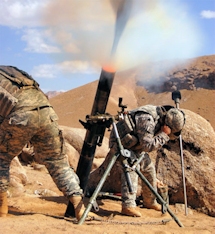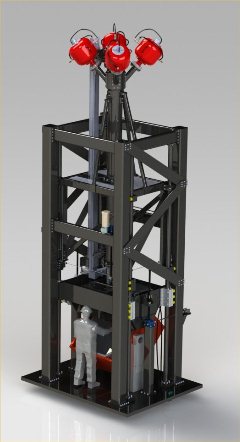
The U.S. Army uses 60, 81, and 120 mm mortar systems. The largest, the 120 mm, produces forces of over 337 kilo pounds when fired. High firing rates impact the reliability and life of the baseplates that support these mortar systems.
The Army faces the challenge of making mortar baseplates strong enough to survive the forces from their mortar tubes, but light enough to reduce the burden on their soldiers who “hump” them over rough and remote terrain. Benét Labs in Watervliet, New York is testing innovative mortar baseplate designs utilizing more exotic and lighter materials.

Lansmont is proud to be able to contribute to that effort. Our technology is well known for preventing damage, improving quality, and reducing costs through source reduction. Utilizing that testing equipment expertise, Lansmont engineers custom designed a Mortar Baseplate Test System (MBTS) that replicates the forces experienced during live fire with a cycle rate over 10 impacts per minute.
The MBTS uses high pressure air to fire steel “bullets” into a specialized hydraulic programmer and fixture which transmits the desired impact pulse into the baseplate. The MBTS will allow the Army to develop new baseplate designs that reduce the load on soldiers, allowing them to maneuver more quickly and with less effort while maintaining baseplate reliability standards.
This project is the latest example of Lansmont's ability to design customized Equipment and Instruments for defense applications. If you would like to learn more about the MBTS or other one-of-a-kind testing systems, please contact me for more information.